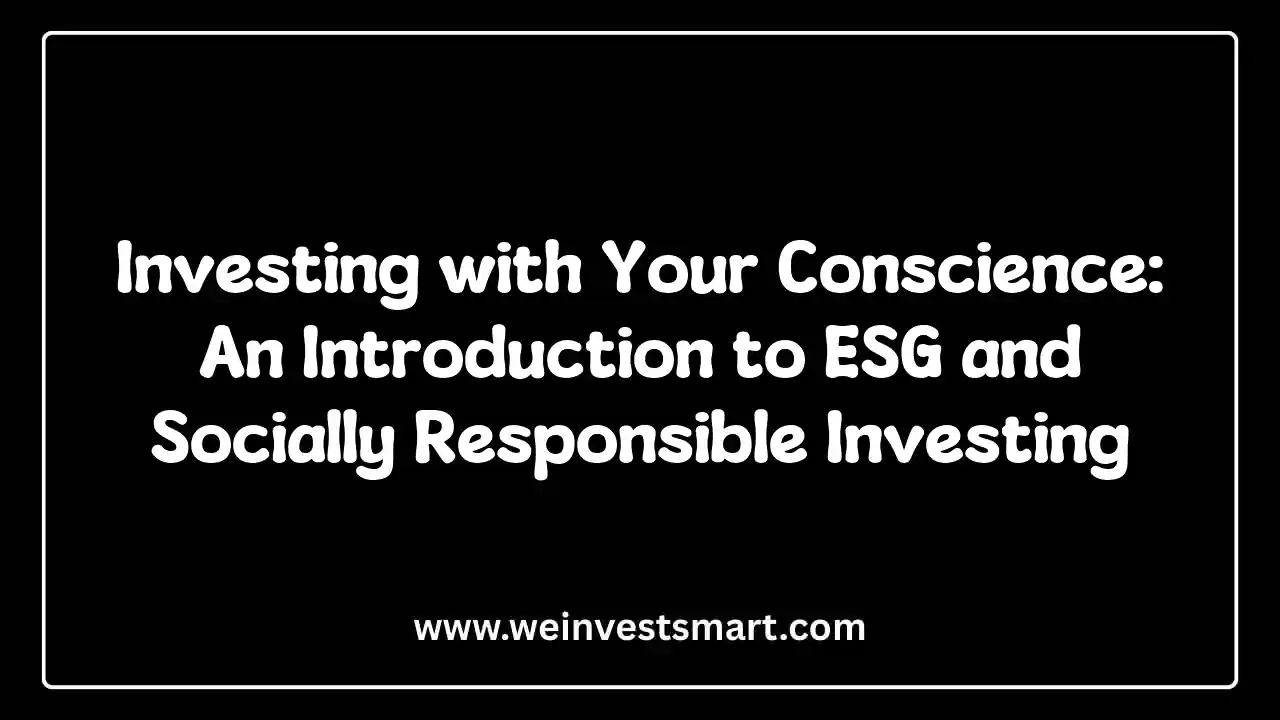· WeInvestSmart Team · investment-strategies · 11 min read
Are You Leaving Free Money on the Table? A Deep Dive into Your 401(k) Company Match
A dedicated post explaining that a 401(k) match is a 100% return on investment. Emphasize that contributing enough to get the full match should be a top financial priority.
Most people think of their salary as the number printed on their offer letter. They see their 401(k) plan as a nice “perk,” a little extra benefit the company offers to help them save for retirement. But here’s the uncomfortable truth: you are fundamentally misunderstanding your own paycheck. The 401(k) company match is not a perk. It is not a bonus. It is a core part of your compensation package that you are required to actively claim. Going straight to the point, if you are not contributing enough to your 401(k) to get the full company match, you are voluntarily taking a pay cut every single year.
We live in a world where we’ll drive across town to save ten cents on a gallon of gas or spend hours clipping coupons to save $20 on groceries. We understand the value of a dollar when it’s right in front of us. Yet, millions of employees collectively leave billions of dollars of free money on the table every year by failing to capture their full 401(k) match.
But what if we told you there was an investment opportunity, available only to you, that offered a guaranteed 100% return on your money, instantly and with zero risk? You’d liquidate every asset you have to get in on it. Here’s where things get interesting. That opportunity already exists. It’s sitting in your HR benefits portal right now, and it’s called your company match. And this is just a very long way of saying that it’s time to stop thinking of this as “saving” and start thinking of it as what it really is: collecting the full salary you’ve already earned.
The Foundation: What Is a 401(k) Match, Really?
Before we get into the math, let’s establish what a 401(k) match actually is. Going straight to the point, it is an incentive program offered by your employer to encourage you to save for retirement. Your employer promises to contribute a certain amount of money to your 401(k) account, but only if you contribute money from your own paycheck first.
Think of it like a “buy one, get one free” sale for your retirement. You put in a dollar, and your company puts in a dollar right alongside it (up to a certain limit). It is the most powerful wealth-building tool available to the average employee.
The funny thing is that we tend to undervalue things that are offered to us as “benefits.” We see it as a nice gesture from the company. But you need to reframe this immediately. During your salary negotiation, the company calculated the total cost of employing you. That calculation includes your salary, your health insurance premiums, your payroll taxes, and the total potential cost of their 401(k) match. It is a budgeted part of your compensation. If you don’t claim it, that money doesn’t come back to you in another form. It simply stays in the company’s pocket.
You may also be interested in: Stocks, Bonds, and Index Funds: A Simple Explanation for the Absolute Beginner
Decoding the Jargon: How Your Company Match Actually Works
The most confusing part for many people is understanding the specific formula their company uses. Let’s demystify the two most common ones.
Let’s use a case study: Meet Maya, who earns an annual salary of $70,000.
Scenario 1: The “Dollar-for-Dollar” Match
- The Formula: “We will match 100% of your contributions up to the first 4% of your salary.”
- What it means: The company will match your contributions dollar-for-dollar, but only up to a maximum of 4% of your total pay.
- Maya’s Action Plan: 4% of Maya’s $70,000 salary is $2,800. To get the full match, Maya must contribute at least $2,800 of her own money into her 401(k) over the course of the year. If she does, her company will deposit an additional $2,800 into her account.
- The Outcome: Maya contributes $2,800, the company adds $2,800, and her account grows by $5,600 (plus investment growth), even though it only cost her $2,800 out of pocket.
Scenario 2: The “Percentage-of-Contribution” Match
- The Formula: “We will match 50% of your contributions up to the first 6% of your salary.”
- What it means: This one is a bit trickier. The company will only contribute 50 cents for every dollar you contribute, and they’ll stop contributing once you’ve put in 6% of your salary.
- Maya’s Action Plan: 6% of Maya’s $70,000 salary is $4,200. To get the full match, Maya must contribute $4,200 of her own money. The company will then contribute 50% of that amount, which is $2,100.
- The Outcome: Maya contributes $4,200, the company adds $2,100, and her account grows by $6,300 (plus investment growth).
But what do we do with this information? You must log into your employee benefits portal or contact your HR department today and find out your exact matching formula. You cannot afford to be ignorant about this number.
You may also be interested in: Growth vs. Value Investing: Which Philosophy Fits Your Personality?
The Math Doesn’t Lie: Why the Match is a 100% Return on Investment
Let’s get to the core of the argument. Why do we call this a 100% return on investment?
Going straight to the point, a return on investment (ROI) is a measure of the profit you make from an investment, expressed as a percentage of the original cost.
Let’s go back to Maya’s first scenario (the dollar-for-dollar match).
- Her Investment: She contributed $2,800 of her own money.
- Her Immediate Profit: The company instantly gave her an additional $2,800.
- The Calculation: ($2,800 Profit / $2,800 Investment) * 100 = 100% ROI.
This happened instantly. Before her money was even invested in a stock or bond fund. Before it had a single day to grow. She doubled her money on day one.
Now, let’s look at the second scenario (the 50% match).
- Her Investment: She contributed $4,200 of her own money.
- Her Immediate Profit: The company gave her an additional $2,100.
- The Calculation: ($2,100 Profit / $4,200 Investment) * 100 = 50% ROI.
A guaranteed, risk-free 50% return is still an absolutely incredible, unbeatable investment. And this is just a very long way of saying that there is no other investment in the known universe that offers this kind of guaranteed, immediate return. The historical average return of the S&P 500 is around 10% per year, and that comes with significant risk. Your company match is 5 to 10 times that, instantly, and with zero risk.
You may also be interested in: Your First Investment: A Step-by-Step Guide to Opening a Roth IRA and Buying an Index Fund
Your Financial Priority Checklist: The Match Reigns Supreme
This is where the rubber meets the road. We all have competing financial priorities. Should you pay off your high-interest credit cards? Save for a down payment? Build an emergency fund?
Here’s where things get interesting. Most financial advice is nuanced. This is not.
Going straight to the point, here is the non-negotiable order of operations for your money:
- Build a Starter Emergency Fund: Save up $1,000 in a separate savings account for small emergencies. This is your buffer against chaos so you don’t have to go into debt for a flat tire.
- Contribute to Your 401(k) Up to the Full Company Match: This is Priority #1B. It is a financial emergency. Do not pass Go. Do not pay extra on your credit cards. Do not open an IRA. You must capture every single dollar of this free money.
- Pay Off High-Interest “Bad” Debt: Now you can aggressively attack any debt with an interest rate above 7-8% (like credit cards and personal loans) using the Avalanche or Snowball method.
- Finish Your Full Emergency Fund: Go back and save up 3-6 months of essential living expenses.
- Invest for Retirement: Now you can open a Roth IRA and max it out, then go back and contribute even more to your 401(k).
But what do we mean by putting the match ahead of high-interest debt? This sounds like a trade-off. It is. But it’s a trade you should make every time. Even a credit card with a brutal 25% interest rate is a guaranteed loss. Your company match is a guaranteed 50% or 100% gain. You are mathematically better off taking the guaranteed 100% gain and then using your increased net worth to attack the debt.
You may also be interested in: The Psychology of the Market: How to Keep Your Cool When Stocks Tumble
The Uncomfortable Truth About “Vesting Schedules”
There is one piece of fine print you need to understand: the vesting schedule.
Going straight to the point, vesting is simply a timeline that determines when you get full ownership of the money your employer contributes to your 401(k). You always have 100% ownership of the money you contribute from your own paycheck. The vesting schedule only applies to your employer’s matching funds.
There are two common types:
- Cliff Vesting: You get 0% ownership of the match money for a set period, and then you become 100% vested on a specific day. A common cliff is three years. If you leave your job after 2 years and 11 months, you walk away with none of the company’s contributions. If you stay for 3 years and one day, you keep all of it.
- Graded Vesting: You gain ownership gradually over time. A common schedule might be: 20% vested after one year, 40% after two, and so on, until you are 100% vested after five years.
The uncomfortable truth is that companies use vesting schedules to encourage employee loyalty. But even though this might seem unfair, we must acknowledge that it should not change your contribution strategy one bit. You should still contribute to get the full match from day one. Why? Because you are planning for success. Most people stay at their jobs long enough to become fully vested. By not contributing, you are guaranteeing a 100% loss. By contributing, you are giving yourself the chance to capture that 100% gain.
You may also be interested in: Lump Sum vs. Dollar-Cost Averaging: What Does the Data Say?
The Bottom Line: Stop Leaving Your Own Money on the Table
If you take only one thing away from this article, let it be this: your 401(k) company match is not a bonus. It is part of your salary. You have already worked for it. You have already earned it. You simply have to fill out the form to claim it.
Failing to do so is one of the biggest and most common mistakes in personal finance. It is the equivalent of telling your employer, “You know what, you can keep a few thousand dollars of my salary this year. I don’t need it.” No rational person would ever do that.
So here is your action plan, for today. Not tomorrow, not next week.
- Log in to your employee benefits portal or call your HR department.
- Find out your exact company matching formula.
- Look at your current 401(k) contribution percentage.
- Increase that percentage to the level required to capture every single penny of your match.
And this is just a very long way of saying that it is time to give yourself a raise. It’s the easiest and most profitable financial decision you will ever make.
401(k) Company Match FAQ
What is a 401(k) company match?
A 401(k) company match is an incentive program where your employer contributes money to your retirement account based on your own contributions, essentially providing free money for your retirement savings.
How does a 401(k) company match work?
A 401(k) match works by your employer matching a portion or all of your contributions up to a certain limit. For example, a dollar-for-dollar match up to 4% of your salary means if you contribute 4% of your pay, your employer adds another 4%. Common formulas include 100% match up to 3-6% or 50% match up to 6%.
Why is a 401(k) match considered free money?
A 401(k) match is considered free money because it’s an immediate 50-100% return on your investment with zero risk. If you contribute $1 and get $1 matched, you’ve doubled your money instantly before any market growth. This guaranteed return is far better than most investments.
What is vesting in a 401(k) match?
Vesting in a 401(k) match refers to when you gain full ownership of your employer’s contributions. You always own 100% of your own contributions. Common vesting schedules include cliff vesting (100% after 3 years) or graded vesting (increasing ownership over 5-7 years). You should still contribute to get the match even if not fully vested.
How do I find out my company’s match formula?
To find your company’s match formula, log into your employee benefits portal, check your 401(k) plan documents, or contact your HR department. Look for terms like “100% match up to 4%” or “50% match up to 6%.” This information is crucial for maximizing your retirement savings.
This article is for educational purposes only and should not be considered personalized financial advice. Consider consulting with a financial advisor for guidance specific to your situation.



